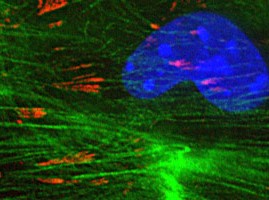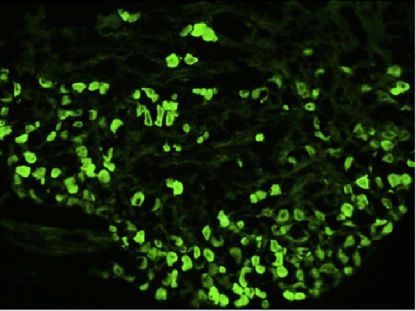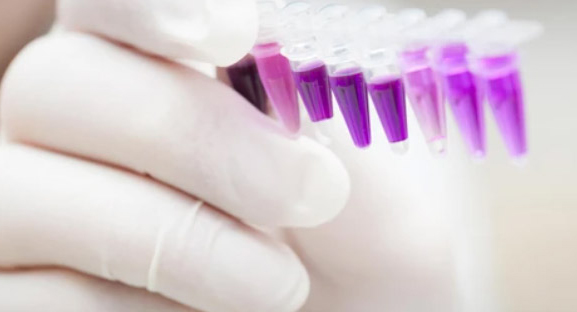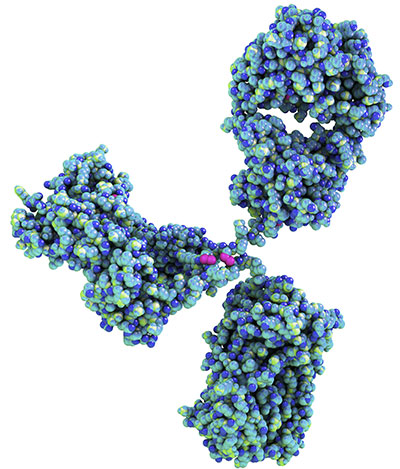Control Antibodies
Creative Diagnostics provide control antibodies to make sure the researchers generating data with confidence. We offers highly specific antibodies to the most common targets: α- and β-Tubulin, COX IV, GAPDH, β-Actin, Histone H3. We also offer a complete range of isotype control antibodies. Please select purified antibodies according to the host species, isotype of your primary antibody, and choose your desired conjugation format.
What are Control Antibodies?

Loading Control Antibodies
Loading control proteins are well-known for their constitutive and stable expressions at high levels in almost all tissues and cells. The expression levels of loading controls in different tissues and cells are comparatively equivalent. Therefore, they are important in evaluating whether protein loading in each well is identical across a gel.

Isotype Controls Antibodies
Isotype controls are negative controls that help differentiate the level of non-specific background signal from the specific signal produced by the primary antibody. Typically, this background signal is the result of immunoglobulins binding non-specifically to Fc receptors on target cells; it can also be due to non-specific antibody interactions with cellular proteins, carbohydrates, or lipids as well as by cellular autofluorescence.
When to Use Control Antibodies
- Loading control antibodies are widely used in Western blotting, immunoprecipitation, immunofluorescence, and ELISA as negative controls to rule out the possibility of non-specific binding. Additionally, loading controls help to distinguish background noise from specific signals, ensuring the reliability of experimental results.
- Isotype controls are most commonly used in flow cytometry, but may also be used as standard blocking agents and protein coating agents for other applications including immunofluorescence, immunocytochemistry, western blotting, and ELISA. They are typically normal serum- or myeloma-derived antibodies of an unknown specificity or raised against an antigen that is presumed to be absent in the sample being evaluated.
Featured Control Antibody Products
Loading Control Antibodies by Targets
How to choose >
When choosing a loading control, it should be considered that the chosen loading control must have a different molecular weight to that of the protein of your interest, avoiding overlapping staining and interference to the result.
Isotype Control Antibodies by Species
How to choose>
Isotype controls should be matched to the primary antibody’s host species and class, including light chains (e.g., IgG1 Lambda, IgM Kappa). It is also necessary to make sure that the isotype control is conjugated to the same fluorochrome or label as the test antibody. It is not sufficient to use one with a spectrally similar fluorochrome. For example, if your primary antibody is a Mouse (IgG2b) Anti-Human XYZ-APC, you will need a Mouse IgG2b-APC isotype control. It is typically recommended that the isotype control be used at the same concentration as the primary antibody.
Find out more in the next section ↓
How to Choose an Isotype Control Antibody
Same Species and Ig Class
One crucial consideration when choosing an isotype control is to match the host species and class of the primary antibody. The host species refers to the organism from which the antibody is derived, such as a mouse, rabbit, or goat. It is essential to select an isotype control derived from the same host species to ensure compatibility and minimize cross-reactivity.
Additionally, the class of the isotype control antibody should match that of the primary antibody. Immunoglobulins, or antibodies, are classified into different classes, including IgG, IgM, IgA, IgE, and IgD. Each class has distinct functions and locations within the immune system. Matching the class of the isotype control with the primary antibody is particularly important in flow cytometry and double-labeling experiments, as it helps avoid potential interference and misleading results.

Same Ig Subclass
The Ig subclass refers to variations within a class, such as IgG1, IgG2a, IgG2b, etc. Different subclasses may have different affinities for Fc receptors and distinct binding properties. Therefore, it is recommended to choose an isotype control with the same Ig subclass as the primary antibody to ensure compatibility and accurate interpretation of results.

Same Label a Primary Antibody
Considering labeling compatibility between the isotype control and the detection method is essential for accurate results. If the primary antibody or secondary detection reagent is conjugated with a specific label, such as biotin or a fluorophore, the isotype control should also be conjugated with the same label. This ensures that both the experimental antibody and the isotype control behave similarly during the staining process.
Other Factors to Consider
To ensure similarity between your primary antibody and the isotype control, several factors should be considered. First, it is recommended to obtain both antibodies from the same supplier. This enhances compatibility and ensures consistency in the manufacturing process. Second, the clonality should be considered. Regardless of whether the primary antibody is polyclonal or monoclonal, selecting an isotype control with the same clonality helps maintain similarity and compatibility between the two antibodies. Beyond this, try to select an isotype control that matches the format, purity, storage, and handling conditions of the primary antibody. This ensures consistency in experimental conditions and minimizes variation.
Customer Reviews
Exceptional Experience Guaranteed
Johnson
Useful negative control
Very useful negative control antibody used for adjust the experiment conditions , l used for many times, often no background.
Hong
Good lsotype control
Isotype controls are labeled with the same fluorochrome as the antibody, which helps to discriminate background (non-specific)fluorescence
Adilbay
Super suitable for WB experiments
This HSPD1 polyclonal antibody was detected as WB positive in HEK-293 cells, HepG2 cells NIH/3T3 cells, HeLa, mouse hearts, rat hearts.
Eddy
Very good lsotype control
I Used to optimize my experimental conditions, gave good feedback, worth a try
delivering Controls Antibodies that exceed customer expectations.
Control Antibody FAQs
01 What is the purpose of a control antibody in my experiment?
Control antibodies are used to validate your experimental results by confirming the specificity of primary antibody binding. They help ensure that any observed signal is due to the intended target interaction and not caused by non-specific binding or background noise.
02 Which types of control antibodies do I need for my experiment?
The types of control antibodies you need depend on your experimental goals:
- Isotype Controls: To evaluate the non-specific binding of primary antibodies from the same species.
- Negative Controls: To confirm the absence of any target signal when no primary antibody is present.
- Blocking Controls: To ensure that observed staining is due to specific primary antibody binding and not due to nonspecific interactions.
03 How do I choose the right control antibody for my application?
Choose a control antibody based on the primary antibody and experimental design. If using an isotype control, select one that matches the isotype of your primary antibody. For negative controls, choose an antibody that does not recognize your target antigen. If you want to verify specificity, use a blocking control antibody that can compete with the primary antibody for binding to the target.
04Are your control antibodies validated for use in ICC experiments?
Yes, our control antibodies are rigorously validated for use in ICC and other applications. They are tested to ensure they work effectively in confirming the specificity of primary antibody binding and are suitable for your experimental conditions.
05Do I need to use control antibodies for all my experiments?
While control antibodies are not mandatory for every experiment, they are highly recommended for validating your results, especially when working with new antibodies or optimizing experimental conditions. Controls help to avoid misleading results caused by non-specific binding or background noise.
06 Can I use control antibodies with other applications, such as Western blot or flow cytometry?
Yes, our control antibodies are suitable for a variety of applications, including Western blot (WB), flow cytometry (FC), immunohistochemistry (IHC), and immunofluorescence (IF), in addition to ICC. Please refer to the product datasheet for specific application guidelines.
07 How do I store control antibodies to ensure they remain effective?
Control antibodies should be stored according to the instructions on the product datasheet, typically at -20°C to maintain stability. Avoid repeated freeze-thaw cycles to preserve their effectiveness. If you're unsure about storage conditions, refer to the datasheet or contact our customer support team.
08 Can I use a control antibody that’s not from the same species as my primary antibody?
It’s best to choose control antibodies that match the species and isotype of the primary antibody to avoid cross-reactivity. For instance, if your primary antibody is from a mouse, you should use a mouse isotype control. However, for certain applications, using controls from a different species may be appropriate. Please contact our technical support team for guidance on your specific application.
09 Can I get a discount on control antibodies?
Creative Diagnostics occasionally offers promotions and discounts on our products, including control antibodies. Check our special offers page or contact customer service for details on current promotions and discounts.
